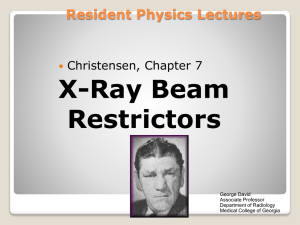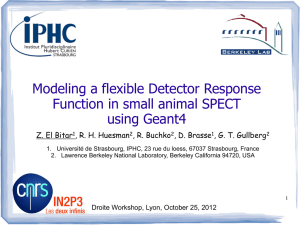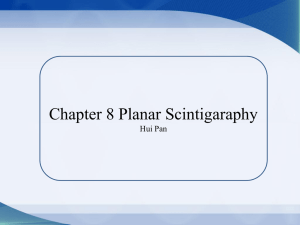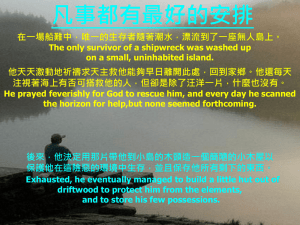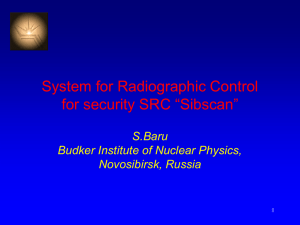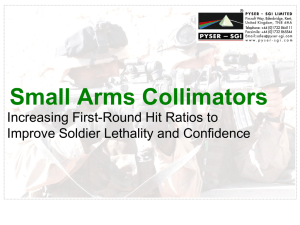July 23, 2010 General Guidance for Surveys in Hall C During Qweak
advertisement
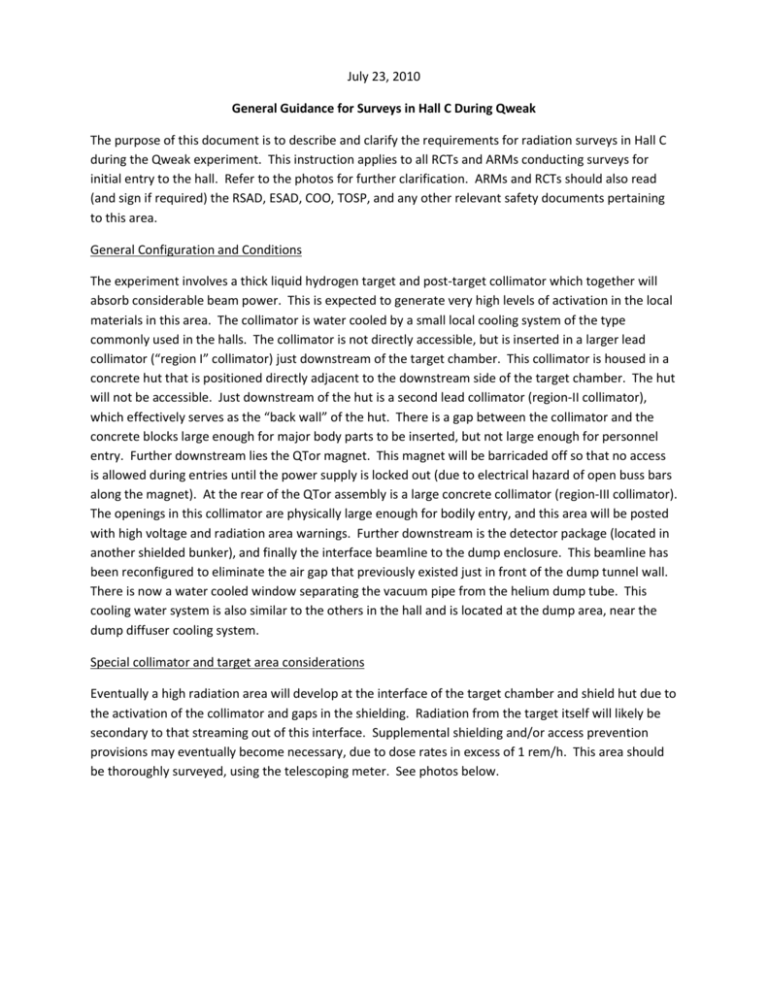
July 23, 2010 General Guidance for Surveys in Hall C During Qweak The purpose of this document is to describe and clarify the requirements for radiation surveys in Hall C during the Qweak experiment. This instruction applies to all RCTs and ARMs conducting surveys for initial entry to the hall. Refer to the photos for further clarification. ARMs and RCTs should also read (and sign if required) the RSAD, ESAD, COO, TOSP, and any other relevant safety documents pertaining to this area. General Configuration and Conditions The experiment involves a thick liquid hydrogen target and post-target collimator which together will absorb considerable beam power. This is expected to generate very high levels of activation in the local materials in this area. The collimator is water cooled by a small local cooling system of the type commonly used in the halls. The collimator is not directly accessible, but is inserted in a larger lead collimator (“region I” collimator) just downstream of the target chamber. This collimator is housed in a concrete hut that is positioned directly adjacent to the downstream side of the target chamber. The hut will not be accessible. Just downstream of the hut is a second lead collimator (region-II collimator), which effectively serves as the “back wall” of the hut. There is a gap between the collimator and the concrete blocks large enough for major body parts to be inserted, but not large enough for personnel entry. Further downstream lies the QTor magnet. This magnet will be barricaded off so that no access is allowed during entries until the power supply is locked out (due to electrical hazard of open buss bars along the magnet). At the rear of the QTor assembly is a large concrete collimator (region-III collimator). The openings in this collimator are physically large enough for bodily entry, and this area will be posted with high voltage and radiation area warnings. Further downstream is the detector package (located in another shielded bunker), and finally the interface beamline to the dump enclosure. This beamline has been reconfigured to eliminate the air gap that previously existed just in front of the dump tunnel wall. There is now a water cooled window separating the vacuum pipe from the helium dump tube. This cooling water system is also similar to the others in the hall and is located at the dump area, near the dump diffuser cooling system. Special collimator and target area considerations Eventually a high radiation area will develop at the interface of the target chamber and shield hut due to the activation of the collimator and gaps in the shielding. Radiation from the target itself will likely be secondary to that streaming out of this interface. Supplemental shielding and/or access prevention provisions may eventually become necessary, due to dose rates in excess of 1 rem/h. This area should be thoroughly surveyed, using the telescoping meter. See photos below. Target Chamber Beam in Shield Hut Target chamber/shield hut interface from left side Note, this space will be filled by concrete block Surveying target chamber/hut interface on right side The collimator cooling system is expected to get significantly contaminated (internally). Any leaks from this system should be reported to RadCon immediately. There is a spill kit located adjacent to the target area to use for this cooling system in the event of a leak. Leaks in the vicinity of the collimator would spill down from and out of the shield hut. The cooling water pump/reservoir may have considerable dose rate upon hall entry. This should be checked as part of the entry survey. Collimator cooling pump skid Surveys downstream of the collimator hut At the exit of the hut, it is expected that radiation streaming through and around the region-II collimator will create a high radiation area, and may present accessible whole-body dose rates above 1 rem/h. For this reason, the access points (at floor level) to this area are equipped with Plexiglas doors that can be locked shut to block access to this region (RadCon will apply locks when/if it becomes necessary). Surveys of this region should include a contact dose rate on the beamline that exits the collimator (there is a bellows visible here). Use caution not to damage the detectors positioned just downstream of the collimator. Also, obtain dose rates at the openings of the collimator, and at the gap between the collimator and shield wall. These should be obtainable without having to climb up above floor level. Rear shield wall Collimator Gap between wall and collimator Detectors Openings in collimator This area covered by Plexiglas door Surveying the downstream end of the hut, at the second collimator Protocol identical on left side Surveys of QTor magnet area The next downstream region is the QTor magnet. This entire structure will have barriers around it to prevent entry. This is for protection from exposed high voltage conductors. Do Not attempt to survey inside the plastic fence barrier. Do not extend the meter into this area. This area will be posted as a radiation area. The survey should show dose rate at the boundary position, and should verify that dose rates don’t exceed the posted condition at the boundary. There should be relatively little activation of the beamline in the magnet area, but there will be streaming of radiation into this area from upstream. Again, just check the boundary. If access is needed into the radiation area around the QTor, the magnet must be powered off and locked out. A survey of the area will then be required upon entry. Buss bar connections (behind Plexiglas barrier Radiation Area to be posted Barrier on right side of QTor magnet – left side identical Do not survey past the barrier Detector Hut At the downstream end of the QTor structure is the final collimator and detector hut. The openings in the collimator will also be posted as a radiation area on the detector hut side. Do not extend the survey meter into the openings. Do not extend survey meter into collimator holes The beamline is shielded along virtually its entire length inside the detector hut. There are one or two spots where a survey of the beamline itself could be conducted. No significant activation is expected in this area, but a normal whole body dose rate survey should be performed. Caution: there are detectors with thin windows in this area. There should be no reason to attempt a contact survey on the detectors. These windows do not pose a personnel hazard, but obviously we want to avoid damaging them. Survey at whole body distances Use caution around detectors Downstream of detector hut The beamline downstream of the detector hut should be surveyed as normal. There are several LUMI detectors in this downstream line. Use caution not to damage them. Survey all the way to the dump wall as usual. Most of this beamline should have no significant activation, but the beamline/dump interface window will be a hot spot and it is reasonable to expect a high radiation area there – possibly above 1 rem/h, given the high current and low energy of the experiment. There is a spill kit in this area, due to the two cooling water systems for the window and diffuser. Check dose rates at those cooling water skids also. Overview of downstream beamline Water-cooled window Beamline interface with dump tube Dump tunnel entrance Window cooling water skid Click here when you have read and understand the document

